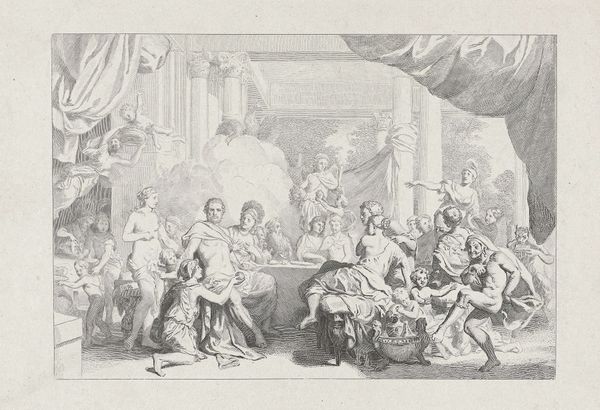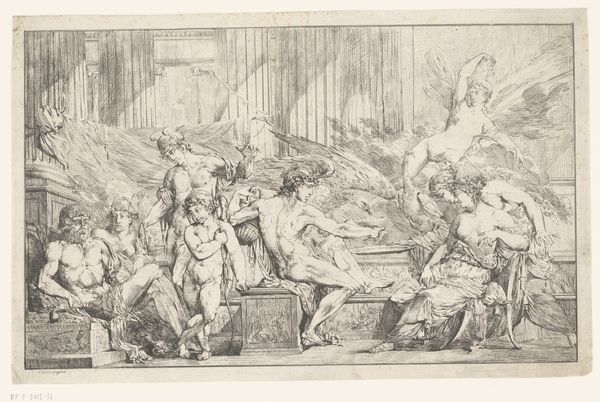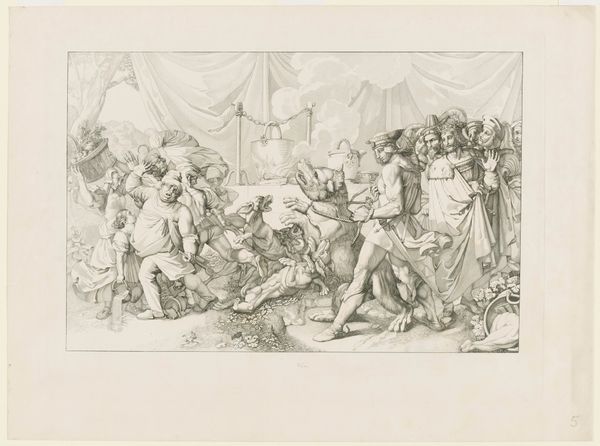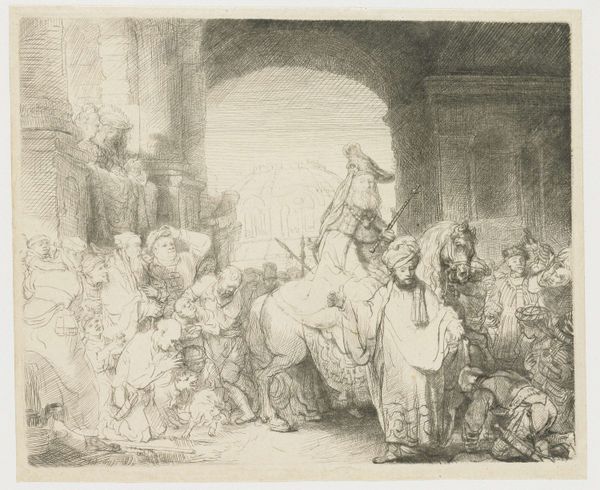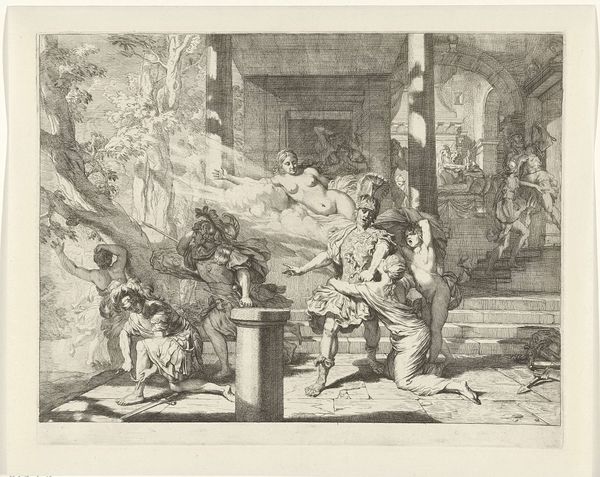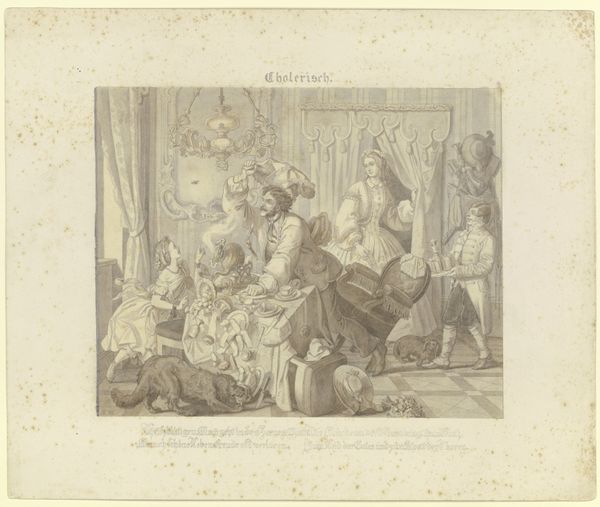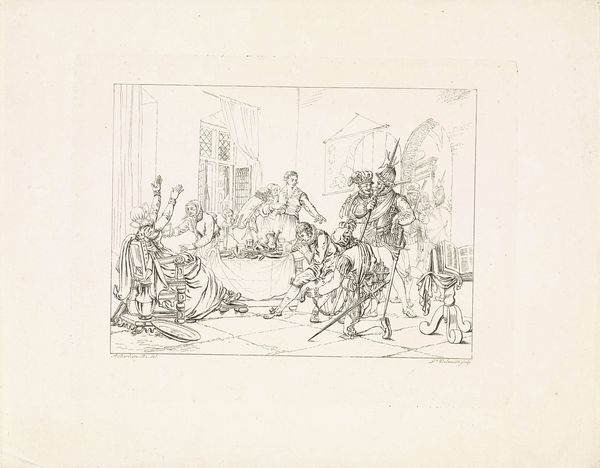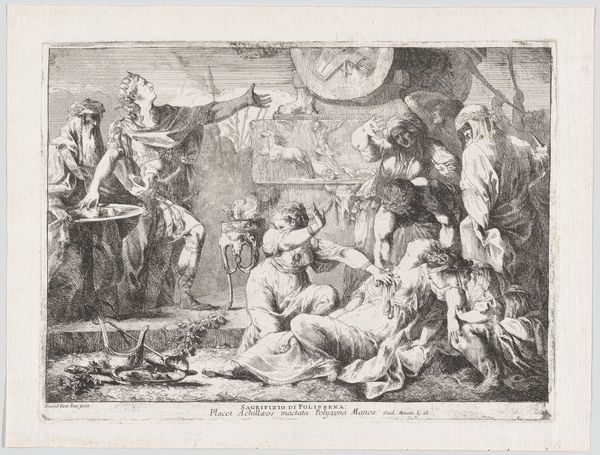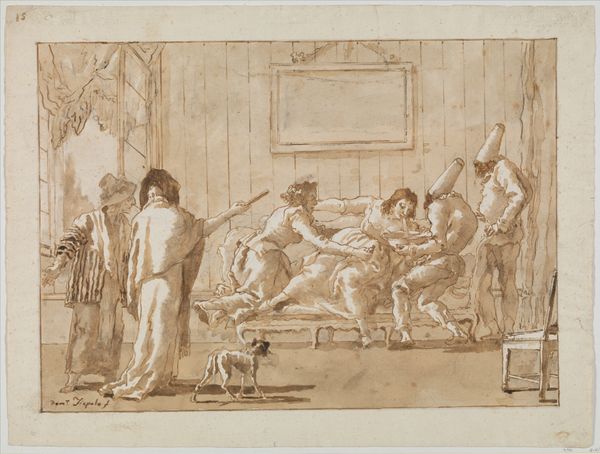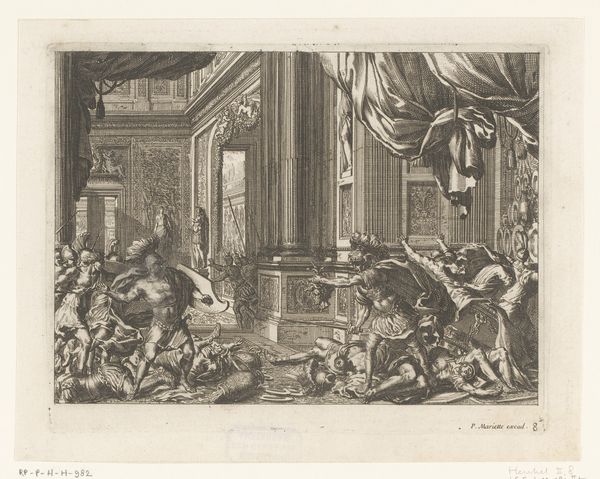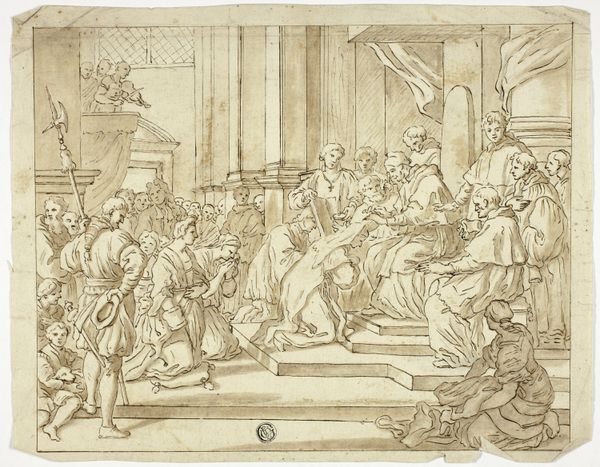
drawing, print, etching, paper, ink
#
drawing
#
ink drawing
#
narrative-art
# print
#
etching
#
figuration
#
paper
#
ink
#
history-painting
#
academic-art
Dimensions: 221 × 357 mm (plate); 261 × 423 mm (sheet)
Copyright: Public Domain
Editor: This is Christian Bernhard Rode's etching "Job in Luck," made in 1778. The figures are packed densely together within a structure of pillars and stone. It has an improvisational feeling in its linear construction, and portrays an image that’s rich in drama. What do you see in this piece? Curator: Indeed. It is not "luck," as in good fortune, that is pictured here but "Luck" as a geographic place, an estate. The return to fortune after great suffering. Rode gives us much to unpack symbolically. Job sits elevated like an emperor in the center. Observe the figures surrounding him—can you identify anything about their attitudes? Editor: I notice a man being carried toward Job on the shoulders of another, with swords suggesting they are soldiers. Nearer to us, on the ground, another figure appears to be slaughtering a bull. Curator: Precisely! Consider these details. The soldiers imply a restoration of status and power, while the bull alludes to sacrifice and atonement. The figures around Job direct our eye and carry symbolic weight related to themes of redemption and reestablishment of covenant. Note that they nearly crowd Job, whose stoic visage shows little affect. This draws further emphasis to what is meant through this combination of image, icon, and cultural understanding of Job. Editor: That’s fascinating! I had not considered the bull as atonement or the soldiers as a reinstatement of power. What are some ways cultural memory informs this image? Curator: Think of how Western art, up through the late 18th century, relied on Biblical narratives and Greco-Roman forms of visual rhetoric to signal status and establish moral positions. Rode has brought these systems together within this piece; from architectural references in stone columns to symbolic and dramatic rendering of Job. Together, it makes clear cultural associations with these memories and stories, allowing a rich exchange between Rode and the observer. Editor: So by understanding the references and iconographic language, we see not just a picture but a narrative loaded with meaning and emotion? I have a better idea of how this imagery has influenced our culture through storytelling! Thank you for elaborating on this, I am beginning to see these symbols everywhere. Curator: My pleasure! It's in the subtle layers of meaning that art truly resonates.
Comments
No comments
Be the first to comment and join the conversation on the ultimate creative platform.
